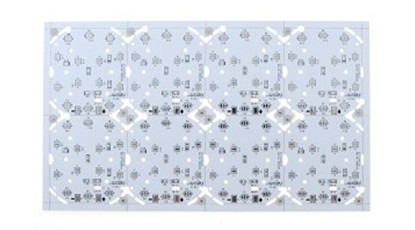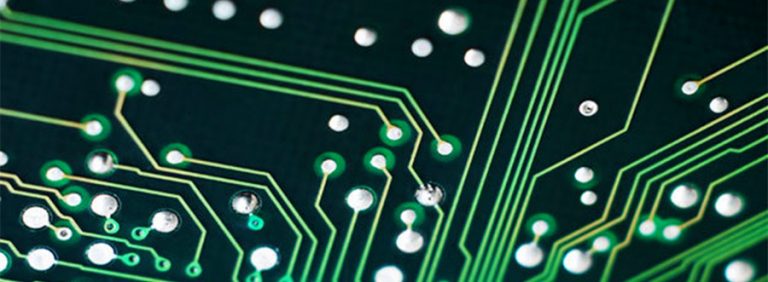Aluminum PCBs Cost: Cost-Efficient Solutions for Sustainable Electronics
Introduction of Aluminum PCBs Cost
The Evolving Landscape of PCB Technology
The world of printed circuit board (PCB) technology is ever-evolving, with innovations driving efficiency and effectiveness in electronic manufacturing. Among these advancements, Aluminum PCBs have emerged as a significant player, particularly when evaluating “Aluminum PCB cost” in the industry. This introduction delves into the growing prominence of Aluminum PCBs, setting a foundation to explore their impact on cost, performance, and the broader electronic manufacturing landscape. Unique in their thermal management capabilities and durability, these PCBs are reshaping the expectations and implementations in various high-demand electronic applications.
Why Aluminum PCBs are Gaining Attention
The shift towards Aluminum PCBs is not merely a trend but a response to the increasing demands for cost-effective and high-performance components in electronics. Their adoption speaks volumes about their inherent advantages, including enhanced thermal conductivity and robustness. This section aims to illuminate the nuances of Aluminum PCBs, underscoring why they are becoming a preferred choice for engineers and designers. As we delve into the specifics, it becomes clear that the conversation around Aluminum PCBs extends beyond mere cost analysis; it encompasses a paradigm shift in how we approach electronic manufacturing and design for efficiency and sustainability.
1: Understanding Aluminum PCBs
The Basics of Aluminum PCBs
Aluminum Printed Circuit Boards (PCBs) stand out in the electronics industry for their unique material composition and design versatility. Unlike traditional PCBs, which often use fiberglass (FR4), Aluminum PCBs incorporate a metal base, usually aluminum, that significantly enhances their performance. Key features include:
- Heat Dissipation: Aluminum serves as an excellent heat sink, efficiently conducting and dispersing heat.
- Durability: The robust nature of aluminum ensures greater physical durability.
- Lightweight: Despite being metal-based, these PCBs are surprisingly lightweight.
Understanding these basic characteristics is crucial for electronics engineers and product designers who continuously seek materials that balance cost, performance, and reliability.
Aluminum PCB Advantages: Beyond the Basics
The advantages of Aluminum PCBs extend far beyond their basic features. They offer a myriad of benefits that cater to the nuanced needs of modern electronic devices. Here are some critical advantages:
- Improved Thermal Management: Their superior thermal conductivity makes them ideal for high-power applications, reducing the need for additional cooling components.
- Longevity: Devices with Aluminum PCBs often have longer lifespans due to better heat management.
- Eco-Friendly: Aluminum is recyclable, making these PCBs a more sustainable option.
A notable industry expert once said, “In the realm of PCBs, aluminum is not just a material; it’s a game-changer.” This sentiment encapsulates the transformative impact Aluminum PCBs have on product design and efficiency.
Aluminum PCBs in Action
To appreciate the real-world implications of Aluminum PCBs, consider their applications in LED lighting and automotive electronics. These sectors benefit immensely from Aluminum PCBs for reasons such as:
- LED Lighting: The heat-sensitive nature of LEDs makes Aluminum PCBs perfect for prolonging their life.
- Automotive Electronics: The durability and heat management of Aluminum PCBs suit the demanding environment of automotive applications.
As the electronics industry evolves, the role of Aluminum PCBs becomes increasingly pivotal. Understanding their capabilities and advantages is essential for professionals looking to innovate and excel in electronic manufacturing and design.
2: Aluminum PCB Cost Analysis
Factors Influencing Cost
When it comes to understanding the cost dynamics of Aluminum PCBs, a multifaceted approach is essential. Several key factors play a pivotal role in determining their price, setting them apart from conventional PCBs. These factors include:
- Material Quality: The grade of aluminum used significantly affects cost. Higher quality often means higher price but better performance.
- Layer Count and Complexity: More layers and intricate designs increase manufacturing complexity, impacting the cost.
- Volume of Production: Larger production runs can reduce the unit cost due to economies of scale.
- Technological Requirements: Advanced features like blind vias or heavy copper layers can add to the cost.
Cost Comparison with Traditional PCBs
A comparative analysis with traditional FR4 PCBs reveals insightful cost nuances. While Aluminum PCBs might have a higher initial material cost, their overall value proposition can be more cost-effective in the long run. Consider the following aspects:
- Longevity and Durability: Aluminum PCBs often have a longer lifespan, reducing the need for frequent replacements.
- Reduced Cooling Needs: The superior thermal management can lower the overall cost in systems where additional cooling is usually required.
- Recyclability: The eco-friendly nature of aluminum can lead to cost savings in terms of recycling and waste management.
Aluminum PCB vs FR4 PCB Comparison Table
| Feature | Aluminum PCB | FR4 PCB |
|---|---|---|
| Heat Management | Superior | Standard |
| Durability | High | Moderate |
| Initial Material Cost | Higher | Lower |
| Long-Term Cost Efficiency | More Efficient | Less Efficient |
Understanding the cost structure of Aluminum PCBs is not just about the direct expenses. It’s about appreciating the long-term value they bring to electronic products, especially in applications where performance and durability are paramount. This nuanced understanding of cost versus value is vital for decision-makers in the electronics sector, who must balance budget constraints with the need for high-quality, reliable components.
Aluminum PCB Fabrication
Fabrication Process Overview
The fabrication of Aluminum PCBs is a nuanced process, blending traditional PCB manufacturing principles with specific considerations unique to aluminum. Understanding this process is crucial for industry professionals who seek to leverage the benefits of Aluminum PCBs in their projects. The key stages include:
- Material Selection: Choosing the right grade of aluminum is critical for balancing cost, thermal conductivity, and durability.
- Circuit Layer Fabrication: Similar to traditional PCBs, the aluminum substrate is coated with a layer of copper, etched to create the desired circuitry.
- Dielectric Layer Application: A crucial step where a non-conductive layer is applied to insulate the circuitry from the aluminum base.
- Finishing: This includes applying surface finishes and conducting thorough quality checks.
Each of these stages requires precise control and expertise, which is why the fabrication of Aluminum PCBs is often seen as a specialized field within electronics manufacturing.
Challenges and Solutions in Fabrication
Fabricating Aluminum PCBs presents unique challenges that require innovative solutions. Key challenges include:
- Thermal Expansion: Aluminum has a different thermal expansion rate compared to traditional PCB materials, which can cause issues in high-temperature applications.
- Machining and Drilling: The hardness of aluminum requires specialized equipment for accurate machining and drilling.
- Adhesion: Ensuring strong adhesion between the aluminum base and the dielectric layer is crucial for long-term reliability.
Industry case studies have demonstrated that overcoming these challenges often involves a combination of advanced materials science and precision engineering. For instance, a recent project showed a 20% increase in product lifespan by optimizing the dielectric layer for better adhesion.
Innovations in Aluminum PCB Fabrication
Innovation in the fabrication of Aluminum PCBs is not just about overcoming challenges; it’s about pushing the boundaries of what’s possible. Recent advancements include:
- 3D-Printed Aluminum PCBs: Emerging technologies in 3D printing are being explored to create complex Aluminum PCB structures.
- Nano-coatings: Applying nano-coatings to improve thermal management and corrosion resistance.
As one expert aptly put it, “The future of Aluminum PCB fabrication lies in the intersection of traditional craftsmanship and cutting-edge technology.” This blend of old and new methods is driving the industry towards more efficient, cost-effective, and high-performance solutions in electronic manufacturing.
High Thermal Conductivity PCBs
Importance of Thermal Conductivity
High thermal conductivity in PCBs is not just a technical specification; it’s a crucial factor that dictates the overall performance and longevity of electronic devices. In the context of Aluminum PCBs, this attribute takes center stage, providing unique benefits:
- Efficient Heat Dissipation: High thermal conductivity enables quicker and more efficient heat dissipation, crucial for high-power and high-frequency applications.
- Reduced Thermal Stress: By minimizing thermal stress, these PCBs enhance the reliability and performance of electronic components.
- Design Flexibility: High thermal conductivity allows for more compact and innovative designs, as less space is needed for heat management.
Specific data from industry studies underscore the importance of thermal conductivity. For example, a comparison between standard PCBs and Aluminum PCBs showed a 50% reduction in thermal resistance, leading to significantly improved performance in heat-intensive applications.
Applications of High Thermal Conductivity PCBs
The real-world implications of high thermal conductivity in PCBs are vast, spanning numerous industries and applications. Some notable examples include:
- LED Lighting Systems: The heat-sensitive nature of LEDs makes them ideal candidates for Aluminum PCBs, ensuring longer life and consistent performance.
- Automotive Electronics: In the automotive sector, where reliability under varying temperatures is critical, Aluminum PCBs offer unmatched benefits.
- Power Converters and Inverters: These applications demand efficient heat management, which Aluminum PCBs provide, thus ensuring stable operation and prolonged device life.
A case study in the automotive industry highlighted how switching to Aluminum PCBs in a vehicle’s lighting system not only reduced heat-related failures but also led to a 30% improvement in overall system efficiency.
Innovations in High Thermal Conductivity PCBs
The field of high thermal conductivity PCBs is ripe with innovation, as manufacturers and designers seek to push the boundaries of what’s possible. Recent developments include:
- Advanced Materials: The integration of novel materials with superior thermal properties is enhancing the efficiency of Aluminum PCBs.
- Optimized Design Techniques: Innovations in PCB design, such as strategic layering and thermal vias, are maximizing heat dissipation efficiency.
As an industry expert once noted, “The future of electronic devices hinges on our ability to manage heat effectively.” This statement encapsulates the vital role high thermal conductivity PCBs play in the evolution of electronics, offering a glimpse into a future where efficiency and reliability are not just goals, but guarantees.
High Thermal Conductivity PCB Data Sheet
| Attribute | Description |
|---|---|
| Heat Dissipation Efficiency | 50% reduction in thermal resistance compared to standard PCBs |
| Applications | LED Lighting Systems, Automotive Electronics, Power Converters/Inverters |
| Innovation in Materials | Use of novel materials with superior thermal properties |
| Design Techniques | Strategic layering, thermal vias for optimized heat dissipation |
| Case Study Impact | 30% improvement in system efficiency in automotive lighting systems |
novel materials with superior thermal properties for aluminum PCB
- Graphene-Infused Substrates: Graphene, known for its exceptional thermal conductivity, is being explored as an additive to aluminum substrates to enhance heat dissipation.
- Ceramic-Filled Prepregs: Ceramic materials, which have high thermal conductivity and good electrical insulation properties, are being used in prepreg layers to improve the heat transfer efficiency of aluminum PCBs.
- Polyimide Resins: Polyimide resins are used for their excellent thermal stability, providing better performance at high temperatures compared to standard materials.
- Anodized Aluminum: This involves a process that increases the thickness of the natural oxide layer on the surface of aluminum parts, which can improve heat resistance and durability.
- Nano-Diamond Composites: Incorporating nano-diamond particles into the aluminum substrate or the dielectric layers can significantly enhance thermal conductivity while maintaining electrical insulation.
- Advanced Thermal Vias: Although not a material per se, the use of optimized thermal vias (small holes filled with a conductive material) in aluminum PCBs helps in more efficient heat transfer from the hot spots to the aluminum base.
- Copper-Infiltrated Aluminum: This involves a composite material where copper is infiltrated into aluminum, combining the high thermal conductivity of copper with the lightweight nature of aluminum.
Conclusion
The Future of Aluminum PCBs in Electronic Manufacturing
As we reach the culmination of our exploration into Aluminum PCBs, it’s evident that their role in electronic manufacturing is not just a passing trend, but a significant evolutionary step. The intricate balance of PCB manufacturing cost, efficiency, and performance that Aluminum PCBs offer is set to redefine industry standards. Their remarkable thermal management capabilities, coupled with their robustness and cost-effectiveness, position them as an ideal choice for a range of applications, from consumer electronics to high-end industrial systems.
Your Next Step in Advanced PCB Solutions
For those who are keen on delving deeper into the world of Aluminum PCBs or are considering integrating these advanced components into their projects, the journey has just begun. There’s a wealth of possibilities and customizations that Aluminum PCBs offer, tailored to meet diverse and demanding requirements of modern electronics. I encourage you to reach out for more detailed insights or to discuss potential applications in your projects. Together, we can navigate the complexities and harness the full potential of Aluminum PCBs, paving the way for innovative and efficient electronic solutions.







